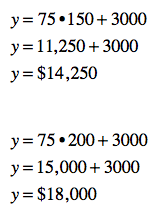There must be a special circle of hell for those of us planning our weddings and receptions. I know this first-hand, because I’m planning my own nuptials for this summer, and I’m about to pull my hair out. (No wait! If I do that, I’ll ruin my opportunity for the perfect up-do!)
Weddings are magical events, filled with joy and love. They’re also damned expensive. Crazy costly. The average wedding in my neck of the woods costs about $25,000. Sure, couples can opt for a family BBQ or a quiet ceremony in a public park. But when you’ve waited as long as I have — I’m 45 years old — there’s no backyard large enough for everyone who wants to be there.
And that’s the variable that matters in wedding planning — the number of guests. The smaller the guest list, the smaller the budget. When the guest list grows, you can expect to shell out a lot more. That’s because the biggest cost of a wedding is the reception — unless you’ve got your heart set on the latest gown to walk the runway in Paris.
If you’re like me, there’s some flexibility in this list. Children or no children? Cousins or just immediate family? What about college friends you haven’t seen in years or office mates? All of these decisions have a direct affect on your bottom line. And this is where the algebra comes in.
Many reception venues follow a simple formula: a flat rental fee, plus a per-person rate. If the number of guests is the variable, you can easily set up an equation to help you settle on the number of people you can afford to attend the reception. Here’s an example.
Let’s say that the venue you’re considering has a flat rental fee of $3,000. In addition, there’s a $75 per person rate to cover food and drinks. (Of course, this rate depends on the menu chosen, plus other add ons, like upgraded linens, top-shelf liquors, etc.) Basically, you need to multiply the per-person rate by the number of people invited and then add the flat fee. In other words:

In this equation, y is the total cost of the reception venue, and x is the number of guests. Break it down, if you’re confused: The total cost of the reception venue is $75 times the number of guests, plus $3,000.
But why take the time to write an equation? Well, this allows you to play with the number of guests or your total budget. For example, if you know you want to invite between 150 and 200 people, you can come up with a range for your budget:

In this scenario, you can expect to pay between $14,250 and $18,000, depending on your final number.
More likely, you know your budget and want to find out the maximum number of people who can attend the wedding. For example, if your budget for the reception venue is $15,000, how many people can you invite?

With a budget of $15,000, you’ve got a guest list of 160 people.
The beauty of creating an equation to help in this problem is that you can play around with the numbers. Once you have the equation, you can try different things, without thinking too hard. And if you’re comparing the costs of several venues or several packages at one venue, you can create several — very similar — equations, one for each option.
I get it. Most brides and grooms aren’t going to take this step. Who wants to do math when planning one of the most magical days of their lives? But this is a clear example of how algebra can reduce the stress of planning a wedding — and possibly save you some cash.
So what do you think? Have I convinced you that algebra can be useful? Share your thoughts in the comments section. And how have you saved money in planning your wedding? Did math help at all? Dig deep and be honest!








Comments are closed.